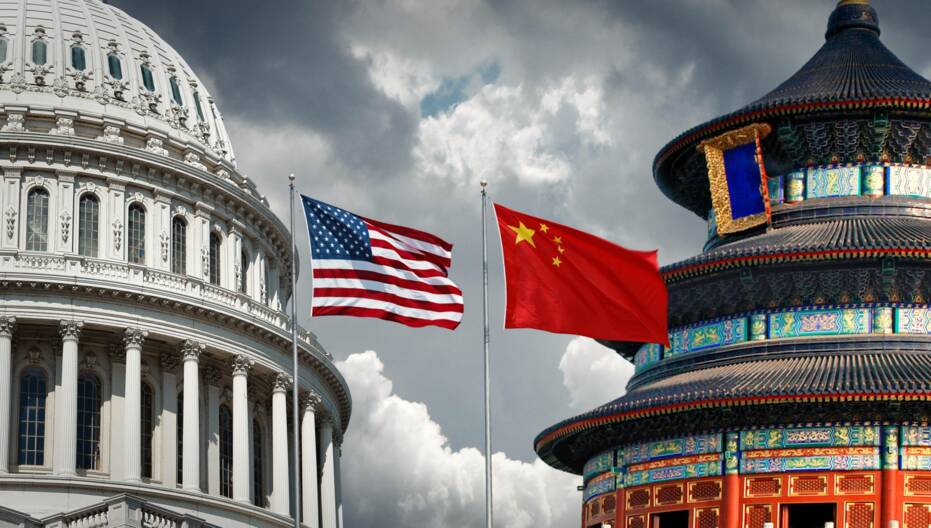On 30 October, Presidents Xi Jinping and Donald Trump met for the first time since 2019, on the sidelines of the APEC summit in South Korea. The two powers reached a tactical agreement allowing the United States to gain time to diversify its sources of rare earth supplies and China to manage deflationary pressures and pursue technological self-reliance.
The concessions announced as part of this agreement may offer some respite to global trade businesses. However, the agreement remains fragile: several major disputes remain, particularly over semiconductors and rare earths, and each party retains leverage that could reignite trade hostilities.
Key points of the agreement reached during discussions in Kuala Lumpur
On Tariffs
The United States agreed to reduce customs duties on fentanyl1 from 20% to 10%, lowering the overall tariff rate on Chinese imports from 41% to 31%. Additionally, the suspension of reciprocal customs duties of 24% will be extended until 10 November 2026. On the Chinese side, there is a possible removal of 10–15% customs duties on U.S. agricultural products.
On export controls
The United States will suspend for one year the 50% subsidiary2 rule for export controls. China, in turn, will postpone for one year the planned controls on five additional rare earths and the application of extraterritorial3 regulations.
In terms of official visits
President Trump will visit China next April, while President Xi Jinping will visit the United States at a later date.
On agriculture
China commits to increasing its purchases of American soybeans, livestock, and vegetables, as outlined in the White House memo.
Port charges
Finally, both countries agreed on a one-year pause on reciprocal port charges.
Macroeconomics: a truce that slows decoupling without stopping it
The agreement temporarily reduces certain tariffs and avoids further export control measures, which should provide moderate support for bilateral trade. For China, this translates into a slight improvement in growth prospects (+0.2 points compared to our previous forecasts to 4.4% in 2026), thanks to a potential recovery in direct exports to the United States and a slowdown in tariff-driven offshoring. The effect will remain limited: the trend towards diversification of supply chains continues, and exposed sectors (electronics, pharmaceuticals) remain sensitive to the risk of future increases in customs barriers.
This truce therefore does not fundamentally change the situation: US dependence on Chinese imports remains high, and geopolitical tensions (Taiwan, technology war, etc.) continue to weigh on business planning.
Contrasting repercussions depending on the sector
Technology and semiconductors
The suspension of new US restrictions on critical software provides some breathing space for China’s pursuit of technological self-reliance. However, the lack of US concessions on advanced chips will keep the bottlenecks for Chinese manufacturers, while US companies remain exposed to anti-dumping measures in China on analogue chips.
Rare earths and strategic industries
The postponement of Chinese controls on five additional rare earth elements has secured US firms another year to stockpile REEs, as long as the truce lasts. But the structural dependence on China, which controls nearly 90% of global refining, will continue to prompt manufacturers to build alternative REEs supply chains.
Agriculture
In the United States, agricultural producers, particularly soybean producers, will benefit from the agreement. But despite Beijing's commitment to increase its purchases of soybeans and agricultural products, the volumes announced remain below the historical average, and China is continuing its substitution strategy via Brazil, limiting the scope of the expected rebound.
Manufacturing and consumer goods
The reduction in customs duties could lead to a slight recovery in Chinese exports of textiles, toys and low-margin goods to the United States. At the same time, the narrowing tariff differential could temporarily slow down the outflow of assembly chains to ‘reroute’ via third countries (Vietnam, India).
This truce offers a respite, but without lasting guarantees, companies must remain alert to the fragmentation of value chains.
The US-China strategic competition remains a looming risk to affect global trade.
emphasizes Junyu Tan, North Asia economist at Coface.
> Read our full Country Risk assessment and forecasts of China and the USA.
1- In February 2025, the United States imposed 10 per cent tariffs on Chinese goods, citing China's insufficient efforts to curb the influx of fentanyl precursors into the country. These tariffs were then doubled to 20 per cent in March.
2- On 29 September, the US Department of Commerce published a new rule expanding the scope of the Entity List (entities on this list must obtain a special licence to import US goods or technology) to include any subsidiary owned 50 per cent or more by a company on the list. Entities on the list must obtain a special licence to import US goods or technology.
3- On 9 October, the Chinese Ministry of Commerce announced that foreign entities must obtain approval from the Chinese government to export products that contain Chinese rare earths representing 0.1% or more of the product's value, or that incorporate technology related to Chinese rare earths.






